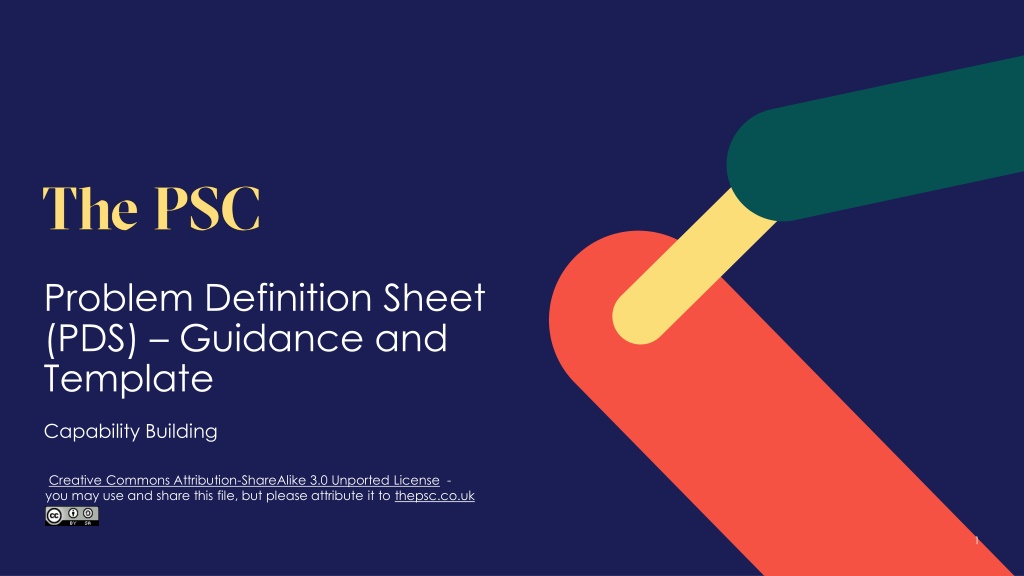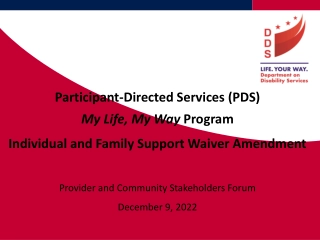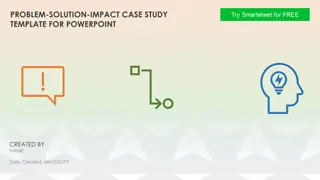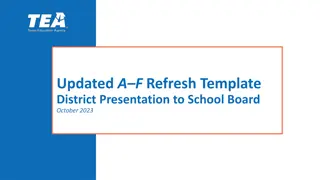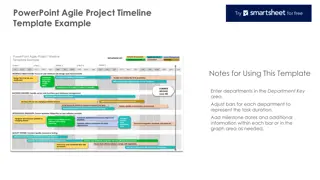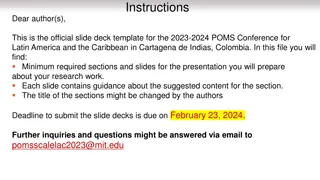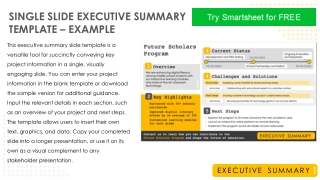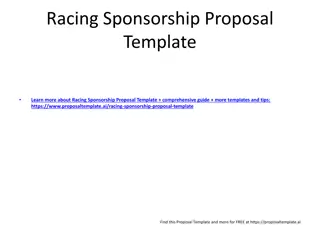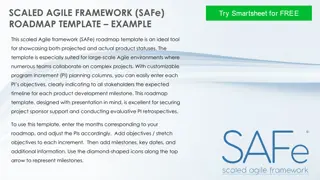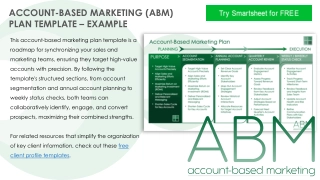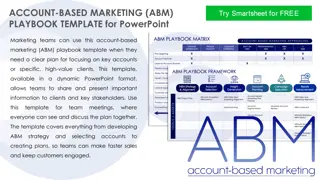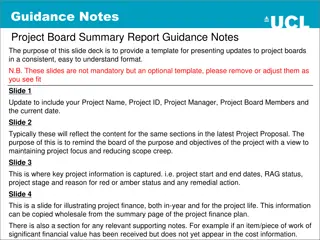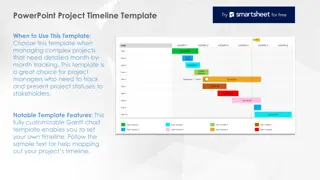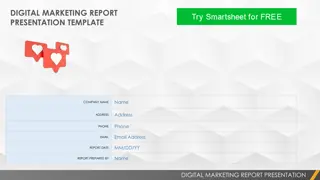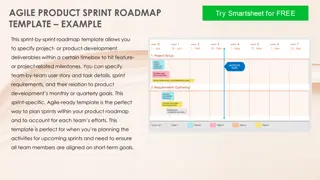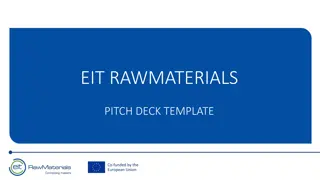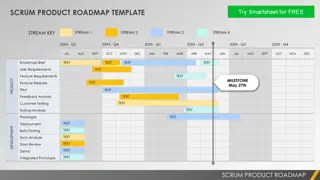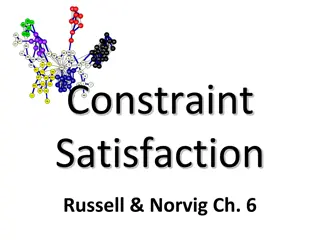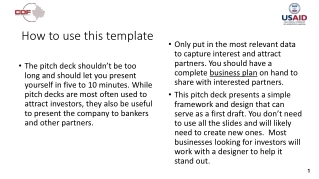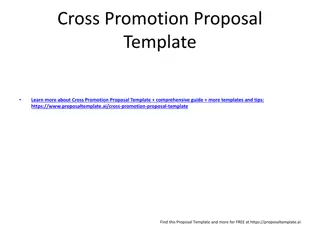Problem Definition Sheet (PDS) Guidance and Template Overview
Providing guidance on utilizing the Problem Definition Sheet (PDS) for project clarity and success. The template outlines key questions, stakeholders, desired outputs, scope, timings, context, constraints, and risks. It emphasizes addressing a specific question, engaging relevant stakeholders, setting SMART goals, and managing project dependencies effectively.
Download Presentation
Please find below an Image/Link to download the presentation.
The content on the website is provided AS IS for your information and personal use only. It may not be sold, licensed, or shared on other websites without obtaining consent from the author. Download presentation by click this link. If you encounter any issues during the download, it is possible that the publisher has removed the file from their server.
Presentation Transcript
Problem Definition Sheet (PDS) Guidance and Template Capability Building Creative Commons Attribution-ShareAlike 3.0 Unported License - you may use and share this file, but please attribute it to thepsc.co.uk 1
Problem Definition Sheet Guidance Basic question to be resolved: As specific as possible and within this as succinct as possible question should be time-bounded and refer to a specific organisation, department or process. Describe the underlying question that the project is aiming to answer, so you can use it to shape your analysis and test your hypotheses. 2. Stakeholders, decision makers and project resourcing Who are the project lead, sponsor and project mentor? What type of project governance is needed to monitor quality, decide on plans and provide external challenge (e.g., project board, steering group)? Who are the key stakeholders with whom you must engage? Where do you expect the most support for this project to come from? Who are your delivery partners (e.g., information team)? 3. Desired outputs and criteria for success What are the key performance indicators (financial and non-financial) that will show the project has been successful? What targets are you aiming for on each one (e.g., at least one option which meets criteria X/Y/Z; stakeholder support for our proposal to meet criteria X/Y/Z; a pilot demonstration of achieving Q/C/D)? What specific end products are required? Goals should be SMART (Specific, Measurable, Attainable, Realistic and Timely) 4. Scope of the work What's included within the project and what's not? If it is out of scope, is it being reviewed elsewhere? 5. Outline timings and milestones When are the project steering groups or end of phase reviews? When are the key deliverables due? 6. Context / background Why is the work being done now? 7. Constraints and risks/dependencies/interfaces Outline the key likely risks/constraints to the project and any interaction with other projects or work Consider how the project will impact those in protected characteristic groups Creative Commons Attribution-ShareAlike 3.0 Unported License - you may use and share this file, but please attribute it to thepsc.co.uk 2
Problem Definition Sheet Template Basic question to be resolved 2. Stakeholders, decision makers and project resourcing Sponsors: Steering: Leads: Key Stakeholders: Delivery team: Support: 3. Desired outputs and criteria for success Output: - Success criteria: - 4. Scope of the work In scope: - Out of scope: - 5. Outline timings and milestones 6. Context / background 7. Constraints and risks/dependencies/interfaces Challenges: - Risks: - Creative Commons Attribution-ShareAlike 3.0 Unported License - you may use and share this file, but please attribute it to thepsc.co.uk 3
How to use a PDS (from our FEP & PSAT programmes) What is this tool? The Problem Definition Sheet ( PDS ) is a one page overview of the objectives for a problem solving project where the required output and success factors are clear (the solution space ), but the answer is not. Its main purpose is to ensure that the project team and stakeholders start the project from the same base. PowerPoint instructions The guiding question is coloured to highlight its role as the focus of the problem solving This template is created with three table shapes, each one column wide. The top one is a single cell. Adjust the other two to match your content just make sure they meet in the middle, and align at the bottom (we recommend keeping them in the suggested sequence 1-7) When to use this tool? The PDS should be used throughout the project. It guides the problem solving towards an answer to the question which meets the success criteria, and helps the team stay within the boundaries for timing, resourcing and scope Tips for problem definition The PDS is most useful when it s a live document, reviewed and refined regularly by the team with their sponsor use a first draft when scoping and test it widely with the team and stakeholders until you are sure everyone is on the same page. Don t be afraid to return to the PDS to reflect your increased understanding, or if stakeholders seek to widen the scope Expect to spend 60% of the time agreeing the question which your issue tree will structure into workstreams and your hypothesis tree will aim to answer as it drives all your problem solving. It should be as specific as possible and within this as succinct as possible. The question should be time-bounded and refer to a specific organisation/department or process Make sure you identify both the outputs of your project (e.g., a report of options or recommendations, or an implemented solution) and the success criteria (e.g., when you meet these you will stop) Find more tools, templates and videos at: thepsc.co.uk/capability-building/ Creative Commons Attribution-ShareAlike 3.0 Unported License - you may use and share this file, but please attribute it to thepsc.co.uk 4
